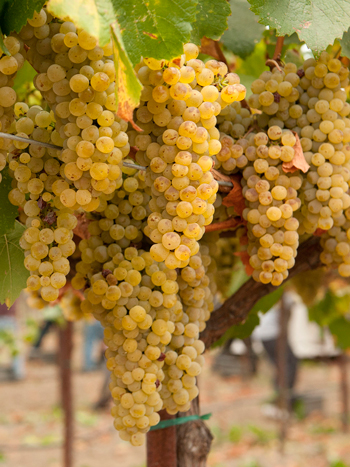Vineyard Evaluation
Existing Vineyard Checklist (Download PDF here: Existing_Vineyard_Checklist)
SITE CONSULTATION
Review site and give recommendations
Review legal description and mapping of property lines. If none exists or incomplete, may require services of licensed surveyor.
Review petiole analysis
Review irrigation and fertilization records including pressure bomb, c-probe and neutron probe reports
VINE INSPECTION
Review nursery records including vine age, varietal, clone and rootstock type
Review crop history by varietal for previous five years
Generate vineyard block map to verify vine country and acreage
SOIL ANALYSIS
Review soil survey and analysis. If none exists and soil survey will need to be done based upon recommendation of REVM
WATER SYSTEMS REVIEW
Review existing well reports including agriculture suitability report and bacteriological test. For accurate assessment of production, well should be tested in late summer. If none exists, will require test by reputable well company.
Inspect drip system
Inspect frost control system
PEST CONTROL PROTOCOLS
Review deer fencing
Review pesticide protocol
GRAPE MARKETABILITY ASSESSMENT
Review existing grape contracts and pricing mechanism. If none exists, REVM will review and evaluate the marketability of the vineyard.
New Vineyard Checklist (Download PDF here: New_Vineyard_Checklist)
SITE CONSULTATION
Review site and give recommendations
Review legal description and mapping of property lines. If incomplete, may require services of licensed surveyor.
Review property appraisal. If none consider a full property appraisal by a licensed appraiser
Review applicable land clearing costs
Review available PG&E power
Access relationships/impact with neighboring properties
Utilize orth-topographical maps to digitize plantable acreage. If no orth-topographical maps exist, they should be prepared by a licensed surveyor so that the plantable land can be calculated through digitizing. In addition to helping the buyer better understand the appraisal value of the property, the map is required for VESCO compliance as well as for drainage design, etc.
Monitor weather patterns. Maximum and minimum temperatures should be monitored to determine frost protection needs.
Calculate degree days (number of days within specific temperature ranges) to determine which varietals are appropriate to the site.
COUNTY PLANNING AND PERMITS
Review property lines with Sonoma County Agricultural Commissioner liaison to verify plantability according to WESCO (Vineyard Erosion Sediment Control Ordinance).
Review property with Department of Fish & Game, Department of Forestry, Regional Water Quality Control, Resource Conservation District and when appropriate the Army Corps of Engineers.
Submit pertinent applications of the above departments.
SOIL ANALYSIS
Perform a full soil suitability analysis on desired plantable acreage. Backhoe pits will be dug and samples taken by reputable soil expert in order to produce a detailed report outlining the physical description and soil chemistry for each pit.
WATER SYSTEMS PLANNING/EVALUATION
Review water availability
If well exists, perform well tests including agriculture suitability and bacteriological test. For accurate assessment of production, well should be tested in the late summer and should be performed by a reputable well company.
If new water development needed, consult licensed geologist to study future water development.
Consult with water witcher for water locations
Consult licensed engineer to review necessary drainage systems and to determine if collected drainage water could be utilized for potential irrigation water
PEST CONTROL PROTOCOLS
Review deer fencing
Review pesticide protocol
GRAPE MARKETABILITY ASSESSMENT
Meet with winery to assess marketability of future grapes


